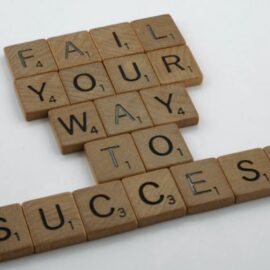

This article gives you a glimpse of what you can learn with Shortform. Shortform has the world’s best guides to 1000+ nonfiction books, plus other resources to help you accelerate your learning.
Want to learn faster and get smarter? Sign up for a free trial here .
How do you feel at the end of your typical day? Do you feel proud of what you’ve achieved or disappointed, thinking you could’ve done more? Do you wish you could be more productive?
As the day begins drawing to a close, many people feel guilty for not having made the most of it. They can’t help getting distracted, postponing important tasks, and spending excessive amounts of time on unproductive activities such as chatting with co-workers or scrolling through social media.
If you’re serious about getting a grip on the way you spend your time and want to learn how to have a productive day from start to finish, the following tips will help you get off to a good start.
Tip 1: Schedule Time Wasters
Studies show that most people waste more productive time in a day than they realize. This time is wasted dealing with distractions and doing unproductive activities.
To minimize time-wasting and maximize your productive time, establish the maximum amount of time you can use for unproductive activities before you have to start working on your to-do list items. When you start to fill these smaller gaps in your day by completing productive tasks instead of wasting time, you’ll see your overall productivity increase substantially.
For example, say you give yourself a maximum of 10 minutes in between scheduled events to spend on unproductive tasks. If you get out of a meeting five minutes before the next item on your schedule, you can spend that time chatting with coworkers, scrolling on your phone, and so on because it’s under your 10-minute threshold. However, if you get out of a meeting 15 minutes before the next item on your schedule, you have to spend that time working on your to-do list because it’s over the threshold.
Tip 2: Minimize Trivial Tasks and Decisions
People waste inordinate amounts of time and energy on trivial tasks and unnecessary decisions. If you remove the burden of insignificant tasks and decisions, your daily productivity will shoot through the roof. In The Happiness Equation, Neil Pasricha offers a few tips on how to have a productive day by minimizing trivial tasks and decisions.
Method #1: Establish Routines for Regular Tasks
Pasricha suggests restricting time spent on regular tasks by automating as much as possible and creating routines and tight schedules for everything else. For example, if you currently check your blog stats multiple times a day, automate this task by opting to receive a single notification once a day. Alternatively, check your blog stats at a specific time each week instead of multiple times each day.
Method #2: Cut Unnecessary Decisions
Write down all of the decisions you make in a day and consider which ones are insignificant wastes of time and energy. According to Pasricha, a decision is “insignificant” if the outcome doesn’t increase your happiness or contribute to your goals. Then, come up with ways to remove the necessity of these decisions. For example, deciding to eat the same breakfast every day saves time and energy each morning and every time you go to the store.
Method #3: Avoid Multitasking and Limit Distractions
Your brain can only focus on one thing at a time. Switching between tasks or giving in to distractions uses up mental energy and slows down productivity. Therefore, Pasricha suggests focusing on one thing at a time and limiting potential distractions to get more done in less time. For example, switch off your phone and email alerts until you complete your task.
Method #4: Set Early Deadlines
Pasricha argues that giving yourself more time to accomplish a task only gives you more time to waste—you feel no sense of urgency, so you procrastinate. In contrast, giving yourself less time to complete something increases your motivation and encourages you to prioritize what you need to do to achieve your goal efficiently.
Method #5: Build Momentum on Tasks You’re Avoiding
There are always going to be things you have to do but don’t want to do due to a lack of confidence or motivation. Avoiding these tasks doesn’t make them go away. Rather, your procrastination incites feelings of fear or guilt because you’re constantly thinking of what you should be doing. These negative feelings then make the tasks seem more difficult than they are. According to Pasricha, forcing yourself to start these tasks reduces their mental toll and improves your confidence and motivation. While starting a task initially requires overcoming reluctance, taking action leads to progress that affirms your ability to get the task done. Building momentum on the task feels so good that it makes you want to complete it.
TITLE: The Happiness Equation
AUTHOR: Neil Pasricha
TIME: 14
READS: 62.8
IMG_URL: https://www.shortform.com/blog/wp-content/uploads/2022/04/the-happiness-equation-cover.png
BOOK_SUMMARYURL: the-happiness-equation-summary-neil-pasricha
AMZN_ID: XYZ
Tip 3: Take Regular Breaks
Society teaches us that we need to be purposeful and productive at all times, so taking time for rest feels unimportant and can even cause guilt and anxiety. As a result, many people don’t know how to take a break at all, working themselves to the point of burnout.
Business strategist Greg McKeown, the author of Effortless, recommends working in a regular pattern of exertion and relaxation. For example, you can try working in the morning, in shifts no longer than 90 minutes, with short breaks in between. Studies have shown this to be the best way to be productive both mentally and physically, as it allows you to recover throughout the day and avoid fatigue.
On top of our need to rest during the day is our need for regular sleep. Lack of sleep can cause considerable harm to our minds and bodies. People who get less than seven hours of sleep a night have weakened motor skills and cognitive abilities. They’re less alert, creative, and social. In the long term, they’re much more likely to suffer from heart disease, stroke, depression, diabetes, and other health issues. According to McKeown, you can improve the quantity and quality of your sleep by going to bed at the same time every night, turning off electronic devices before you sleep, and taking a hot bath or shower before bedtime.
Tip 4: Be Intentional With Your Time
The final tip on how to improve your daily productive output is to focus on your unique strengths or core competencies—the things that you’re amazing at or can’t outsource—and spend most of your time using these strengths while delegating tasks that you don’t excel at.
To discover your overlooked strengths, productivity expert Laura Vanderkam (168 Hours) suggests creating a bucket list with 100 items on it. Then, review your list and start doing some of the cheap and easy ones. By trying several activities, you’ll discover what you like and are good at—and what might count as a unique strength. Be open to the possibility that a unique strength could surprise you. For example, you might take an art history class and discover that analyzing art is a unique strength—and you could use that skill to write a book.
To ensure you have enough time for what you do best, schedule more time for these tasks and less time for tasks you’re not as good at
| The Pomodoro Technique of Time Management Pomodoro is a way of reserving chunks of time for uninterrupted (and therefore productive) work. It works like this: – Start a timer for 25 minutes. – Focus on your work for 25 minutes and don’t let anyone interrupt you. When the timer goes off, stop working. – Address any interruptions you ignored during your 25 minutes. – Take a five-minute break. – Do another 25 minutes of work. – After four 25-minute sets, take a half-hour break. |
Final Words
When most people try to be more productive, they focus on how they can complete more tasks in less time. But if you want to know how to have a productive day from start to finish, you need to think about the bigger picture.
If you enjoyed our article on how to have a productive day from start to finish, check out the following suggestions for further reading:
There isn’t enough time in the day to meet all of the work and personal responsibilities you’re swamped with, let alone keep up with email, social media, and all the things you’ve been meaning to read. In Eat That Frog, business consultant Brian Tracy says the answer is to identify your most important task—the one with the greatest consequences—and do that first each day. It’s like eating a frog: when you have a big challenge, or frog to eat, it’s best to get it out of the way first; everything after that will be easier by comparison. Based on this insight, Tracy offers a list of practical tips for improved productivity and success.
If you often find yourself overwhelmed by your task list and obligations, Organize Tomorrow Today can help. Along with sports and travel writer Matthew Rudy, authors Jason Selk and Tom Bartow teach you how to have a productive day, maximize your time, and set yourself on the path to success.

Want to fast-track your learning? With Shortform, you’ll gain insights you won't find anywhere else .
Here's what you’ll get when you sign up for Shortform :
- Complicated ideas explained in simple and concise ways
- Smart analysis that connects what you’re reading to other key concepts
- Writing with zero fluff because we know how important your time is






